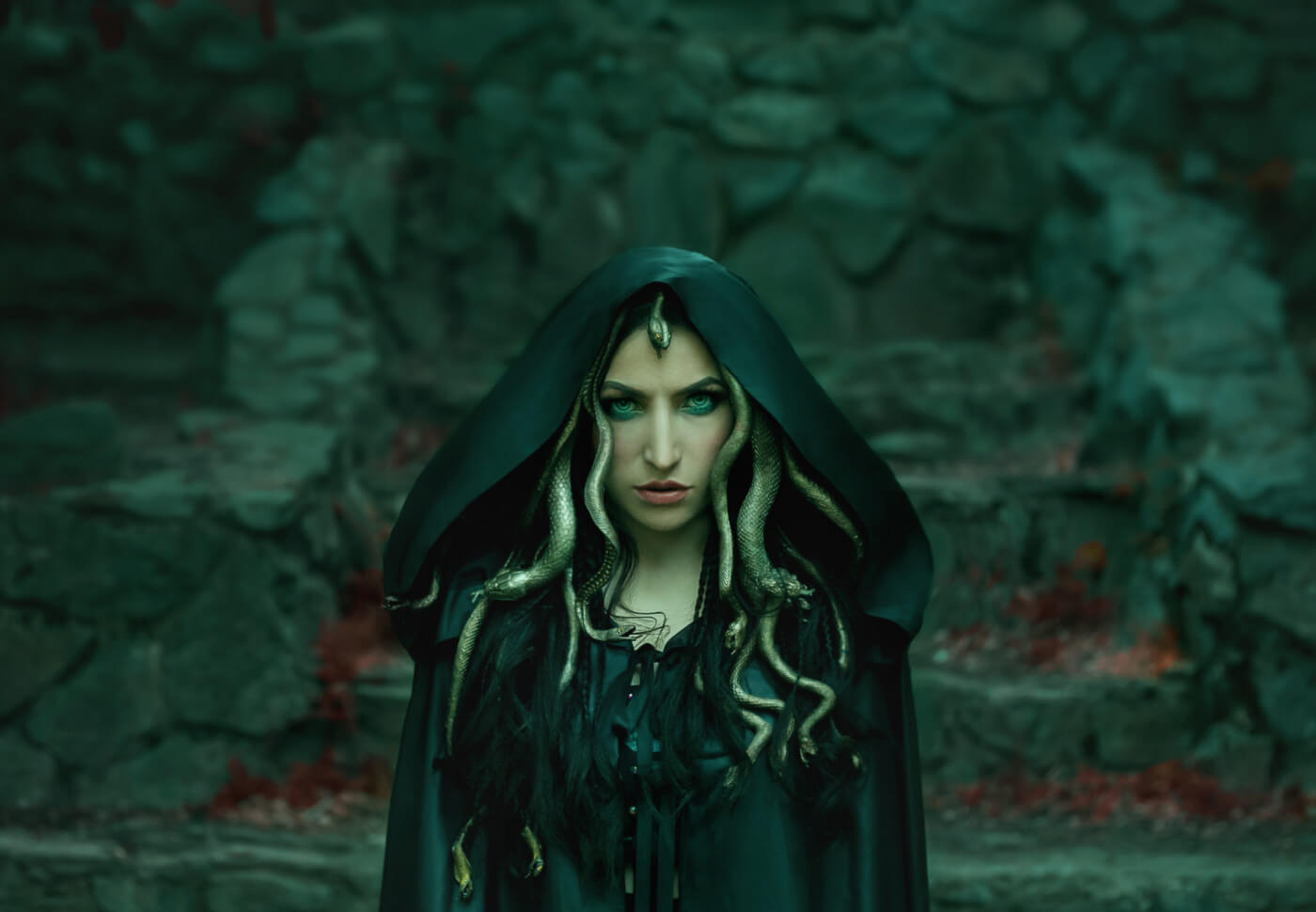When we think of a Gorgon, what (or who) comes to mind?
Is it a winged giantess? A triad of beasts? Or the once beautiful maiden turned snake-haired Medusa?
While Medusa is undoubtedly the most celebrated Gorgon in mythology, we must not forget her sisters, Stheno, the Mighty One, and Euryale, the Roaming One.
Daughters to the sea gods Phorcys and Keto, Stheno and Eurydale possessed the gift of immortality, whereas Medusa, the Cunning One, did not.
In ancient Greece, the Orphics referred to the moon’s face as a Gorgon’s head. Author Robert Graves suggests this reference was a nod to the matriarchy and the three Gorgon sisters as early representations of the Triple Goddess. Since Medusa was mortal, and therefore the only Gorgon who could die, she was seen as the crone goddess, the wise one, the highly feared and misunderstood dark phase of the moon.
Although the Gorgon sisters began life as beautiful maidens, it was when Athena cursed Medusa that the three women transformed into the monsters we know today. With a gaze that petrifies onlookers, it’s no wonder that Gorgon sightings are few and far between. While their description varies per source, they are said to be giant winged beasts. Their bodies are covered in golden scales (to match their wings), and they have tusks and claws that grow sharper with age.
But it’s their hair, once golden but now writhing with snakes, that is the Gorgon’s most memorable feature.
In mythology, snakes and serpents often represent higher wisdom, regeneration, and transformation (more nods to the Goddess). But these divine gifts can feel scary to the uninitiated, which is perhaps why Gorgon snakes could kill, or at the very least, intimidate anyone who dared get too close.
When Perseus slew Medusa on behalf of Athena, her unborn children, Pegasus and Chrysaur, burst forth from her fatal wound. Because Gorgon’s blood had the ability to heal others (and was often sought after by alchemists), in addition to claiming her head, Perseus took a few vials of blood that eventually ended up in the hands of Asclepius, the God of Healing.
In many stories, Athena wears a breastplate with a Gorgon face engraved into it. In others, she wears Medusa’s severed head around her neck. An Olympian with an enlarged ego who claims superiority over another is nothing new, however, some believe that by Athena wearing Gorgon imagery, she’s illustrating the power shift between matriarchal and patriarchal belief systems. Athena is a patriarchal goddess and the archetypal hero. The Gorgon could represent her shadow side—the repressed feminine she sacrifices by aligning herself with Zeus and the rest of the solar gods.
While Gorgons are mostly referenced in Greek myth, before then, they existed in Libyan ritual. Moon-worshipping priestesses wore masks called “gorgoneions” to scare away those unfamiliar with the sacred rites to evoke the Goddess. Later on, these gorgon masks began appearing in people’s homes and businesses to ward off evil. Gorgoneion coins and talismans were also carried for protection or to appease the Goddess.










